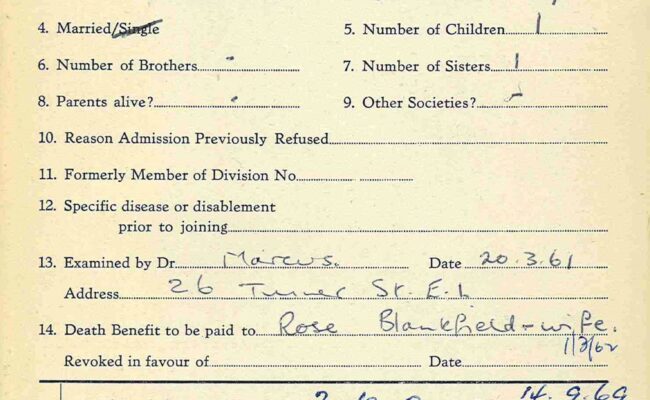The Workers Circle
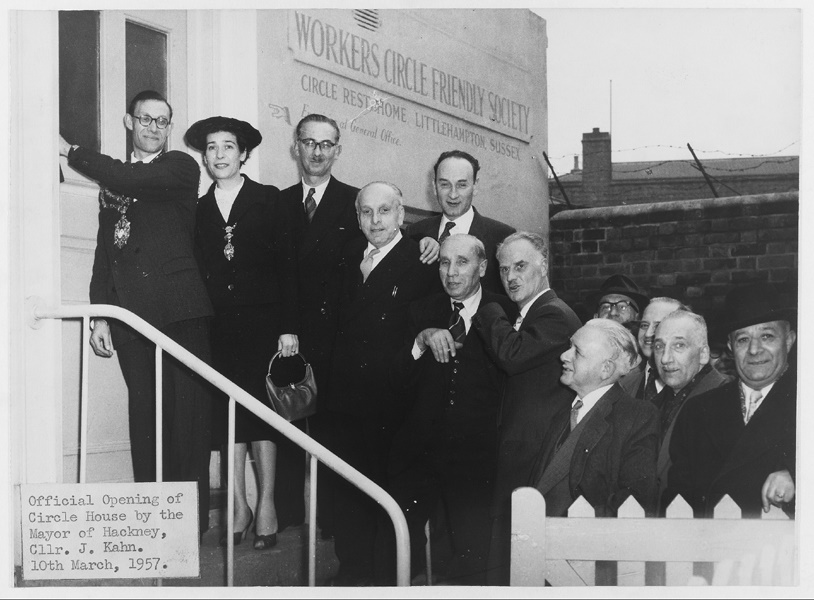
Introduction
The Worker’s Circle Friendly Society was established in 1911 in East London by Jewish immigrants from Eastern Europe who felt they did not belong in other Jewish Friendly Societies who looked down upon the working class. Socialist-minded and focused on providing its members with mutual aid in matters of education, sickness or unemployment, the society was the result of a merger of two groups founded in 1908 and 1910 respectively: the Arbeiter Ring Verein and the Freie Arbeiter Ring. The Society initially operated from a small location at 136 Brick Lane until 1924 when it moved to Alie Street in Aldgate to establish Circle House – a hub of Jewish social and cultural activity. In 1956, the Society sold the Circle House building in Aldgate and moved to a smaller locale in Hackney, where it stayed until the Society’s dissolution in 1985.
Branches
The Society was separated into branches, also known as divisions, which were divided according to its members’ dwellings, occupation, or political leanings. Examples of division by city are Div. No. 7 in Liverpool, Div. No. 8 in Glasgow, Div. No. 11 in Manchester, and Div. No. 5 and 12 in Leeds. Examples of division by politics are Div. No. 10 formed by men and women working with the Labour movement in East London and Div. No. 15 (Paole Zion) supporting Zionist activities, whereas Div. No. 2 was created for the tailors of the West End. Divisions had their own presidents and secretaries who monitored contributions, arranged meetings and corresponded with the Society’s Central Committee.
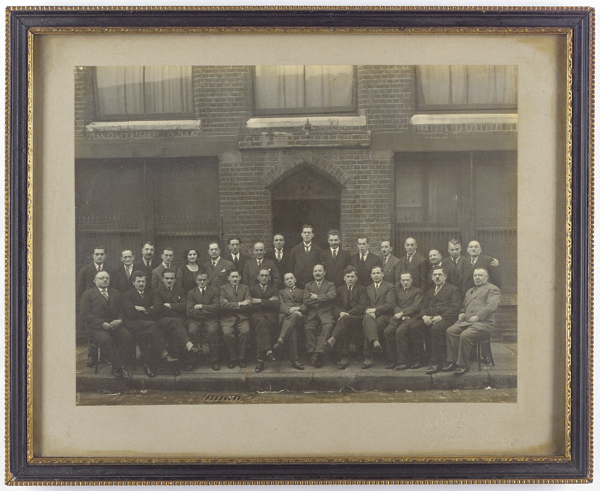
Framed black and white group photograph of the First Central Committee of the Workers’ Circle Friendly Society, taken at the back of Circle House in Great Alie Street. 1991.98.3
Scales
The Workers’ Circle Friendly Society, unlike many other Jewish societies that relied on philanthropic donations, wanted to be self-sufficient. In order to support its activities, it collected a weekly fee from its members that depended on their age group and chosen scale. Scales ranged from A to D and included various benefits, such as sick pay, surgical appliances (spectacles, crutches, etc.), medicine and doctors, or disablement and death benefits. Contributions could range from only 2d per week at a D scale and up to 1/10 at an A scale. As a member aged, their contributions were expected to increase as well.
Language
Jewish immigrants from Eastern Europe generally spoke Yiddish and upon arrival to the United Kingdom had to learn English to communicate with those outside of their circles. Due to the large number of both Yiddish and English speakers, the Society published booklets, a magazine, and announcements in both languages. Even certain Committee meetings were bilingual, whereby some members would speak Yiddish, others English, whereas others mixed the languages, resulting in multilingual minutes.
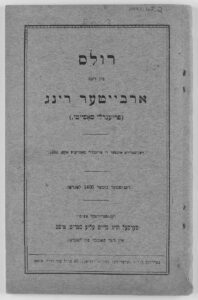
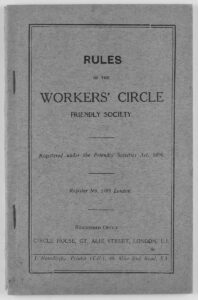
Women
The first women’s section was established in 1931 by Division 3. The Society had always permitted women to join due to its socialist values, however, this unit was created to solely cater to women. The women’s section regularly organised social outings, committee meetings, as well as fundraisers for Jews in need. In the coming years, many divisions had their own women’s section, but only those of Division 3 and 10 functioned well into the later years of the Society’s existence.
This project has been supported by ACE and was part of our NPO Activity Plan 2023-2024.

